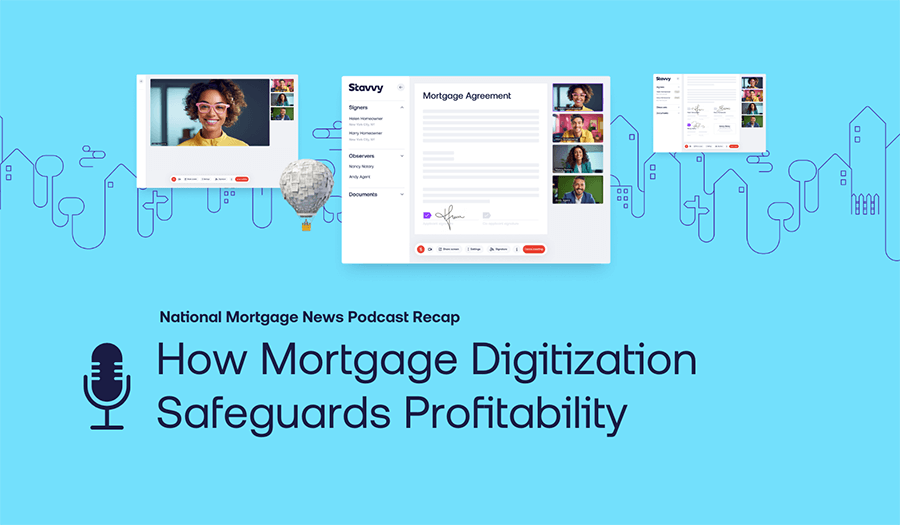Neil Armstrong once reminded us that, for all our scientific and technological advances, we continue to be lousy prophets — that “we predict too much for the next year and yet far too little for the next 10.”
At times, our year-ahead predictions are goals and dreams disguised. Other times, our predictions are fears grounded in our experience but projected into the unknown, like casting a shadow onto a shadow.
Thankfully, the shadow cast by past predictions of a massive spike in COVID-related foreclosures seems to dissipate further with each new sunrise, but like our own attempts at prophetic utterances, past predictions of a foreclosure wave were well founded on the observations of the day and our shared experience.
Foreclosure Predictions from 2020
Dial back in time with me for a moment: It is March 2020. The President has just declared the COVID-19 pandemic as a National Emergency. Non-essential businesses and government offices are closing. Some Americans began to work from home while others lost their livelihoods entirely. An abyss of uncertainty stared straight at us. When we were able to set aside momentarily concerns about the things that matter most—family, friends, and health, to name a few— we did so only to be faced with another set of seemingly unanswerable scenarios.
Many questions lingered in common across the housing finance industry. How can I ensure operational continuity without risking the health of my staff? How do I complete appraisals? How do I notarize and close loans? How many homeowners will be unable to make their monthly payments?
For those of us looking at housing finance through the lens of a government agency at that time, a few salient issues were ever present. Just how many households will default due to this hardship? What is the systemic impact of sweeping mortgage delinquencies? What should be done to minimize the ravishing effects of widespread foreclosures? The economic decay and emotional devastation following the subprime mortgage crisis of the previous decade was not a far off memory. Close to 10 million households lost their homes during that time.
A government-wide effort to provide homeowner relief ensued via foreclosure moratoriums, forbearance programs, and enhanced loss mitigation options. In 2020, certain projections indicated that as much as 25% of all outstanding mortgage loans could go into forbearance. As the pandemic extended, many wondered whether these programs were simply delaying an inevitable wave of foreclosures. The domino effect that could follow was terrifying to consider, even if ultimately unsubstantiated.
Foreclosure Realities of 2021
Foreclosure activity in 2021 was at a historic low of 0.1% of all U.S. housing units*, thanks in part to the collaborative loss mitigation efforts carried out by servicers and government agencies, as well as the restrictions imposed by the CFPB’s 2021 Mortgage Servicing rule. Forbearances peaked in May 2020 at just under 9% and as of the start of 2022, less than 1.5% of outstanding mortgages are in active forbearance plans. Put simply, we no longer predict to see the degree of displacement we saw with the previous crisis. But to say that result B is better than result A, is not to say that result B is good, nor that we should have no cause for concern.
The approximate 1.5% of mortgages still in forbearance represents hundreds of thousands of households – households that must find a way to resolve the arrears that have accrued during the extended forbearance periods to avoid losing their home. The unfortunate truth is that not all will be able to, and I say this with the empathy of someone who knows personally the pain, stress, and emotional devastation of losing the shelter and safety of a home. Time has yet to erase the still image of my mother’s painfully piercing gaze as she told my 9 year old sister and I that the house we knew was no longer home.
The Forecast for Foreclosures in 2022
Now that the foreclosure restrictions put in place by the CFPB’s COVID Servicing Rule have sunset, we can reasonably expect foreclosure activity to pick up in the midst of a likely rising interest rate environment. As an industry, our focus must shift to this next challenge. What must we do to serve homeowners facing foreclosure with the degree of care, clarity, accuracy and diligence they deserve while optimizing operational costs?
At Stavvy, we care deeply about this question and venture to say that we have an answer.
Our industry relied on technology to answer many of the questions we faced at the start of the pandemic. We ensured continuity of operations while safeguarding the health of our employees by replacing in-person interactions with online audio-visual platforms. We expanded use of digital appraisals, leveraged technology to conduct notarizations remotely, and witnessed exponential growth in the number of electronic and hybrid closings. Stavvy ushered in tools to facilitate recordable electronically-signed modifications that support streamlined modification processes, particularly in the government-backed mortgage segment.
In that same spirit, we believe our technology can provide for a legally-compliant foreclosure process that respects people and minimizes errors. On a daily basis, default servicing teams and attorneys operate in an environment replete with stress sources including legal deadlines, regulatory requirements, limited budgets, and the need to interact with people facing one of the most disruptive life events any of us can face. Errors caused by paper-based or manual processes shouldn’t be on this list.
Stavvy has created a single, human-focused platform to share, collaborate, sign, and notarize loss mitigation and foreclosure documents electronically, remotely, and accurately. Our services equip default teams to track and communicate about the status of documents in real time. Documentation errors can be flagged, communicated and corrected with greater precision without needing to browse through voluminous paper or PDF documents. If a document needs to be signed or notarized, you can do that as well, electronically, remotely, and with the highest level of security and confidence. By enhancing collaboration, our platform enables servicers and attorneys to focus on providing homeowners the degree of transparency and care they deserve. We believe that the time to modernize all facets of the mortgage lifecycle to better serve people is now, and the technology to do it is here.
While modernizing loss mitigation and foreclosure processes are not moon shots, we understand that changing what we have always done can feel like it is. It doesn’t have to and we would like to show you how. After all, most of us carry around a little device that has more computing power than the Apollo spacecraft that carried Neil Armstrong to the moon. Surely we can leverage modernized tools to increase transactional accuracy and diligence in a manner that demonstrates care and attention for the people we are working with and the health of our planet.
It may be true that technology cannot enhance our individual prophetic ability. Perhaps we make too many predictions about the immediate future, and not enough predictions beyond that. I leave discussion and resolution of those matters to minds brighter than mine and souls wiser than my own.
But there are a few things I do know.
First, regardless of which predictions we make or believe, the only way we will have a shot at living in the future we would like to see is if we work together to build it. Join us in building this future. Second, whether a foreclosure spike occurs in the next year or in the next ten, the time to optimize mortgage processes to minimize errors and reduce costs is upon us. Lastly, the issue is not ultimately whether we are facing a tsunami of defaults or a manageable stream of the same. The issue is that each family facing mortgage default deserves the most attentive and compliant approach servicers and attorneys can provide. Our tools can take you beyond postage and email to a workflow that makes default servicing better for all involved.
Learn more about how the  is taking real estate beyond documents.
is taking real estate beyond documents.
*Source: ATTOM Data, https://www.attomdata.com/news/market-trends/foreclosures/attom-year-end-2021-u-s-foreclosure-market-report/



![[Webinar Recap] Advancing Your Digital Default Servicing Strategy](https://blog.stavvy.com/hubfs/advancing-your-digital-default-servicing-strategy-blog-recap.png)